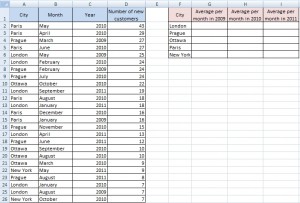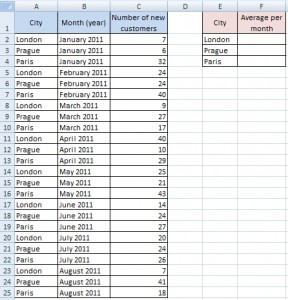Value of the last filled cell in a column or in a row
I’m using Array Formulas to find the last filled or the last non empty cell ,it’s the same :). Important: Each formula must be confirmed by Ctrl+Shift+Enter (not just Enter). Continue reading “Value of the last filled cell in a column or in a row” »




